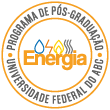Banca de DEFESA: OSCAR DANIEL VALMAÑA GARCIA
Uma banca de DEFESA de DOUTORADO foi cadastrada pelo programa.DISCENTE : OSCAR DANIEL VALMAÑA GARCIA
DATA : 05/08/2021
HORA: 14:00
LOCAL: Via remoto
TÍTULO:
METHANOGENIC TOXICITY OF SODIUM MONENSIN AND HOPS β-ACIDS AND THEIR EFFECTS ON ANAEROBIC BIODIGESTION OF VINASSE IN THE CONTEXT OF THE BRAZILIAN SUGAR AND ALCOHOL INDUSTRY
PÁGINAS: 360
GRANDE ÁREA: Outra
ÁREA: Multidisciplinar
RESUMO:
Vinasse stands out as the most important residue of ethanol production in Brazil. A significant part of the energy from sugarcane is still neglected through fertigation, with the concomitant environmental risks. Anaerobic digestion stands out as an alternative that reduces the organic pollutant load, recovers bioenergy in the form of biogas, and which is compatible fertigation. The bacterial contamination of alcoholic fermentation and the use of antibiotics, and new antimicrobials for its control in the plants, constitute challenges for the sector and the scientific community, considering the spread of anaerobic digestion technologies for vinasse. Information gaps in the scope of the identification and quantification of antibiotics in vinasse and about the effects of these compounds on its anaerobic digestion, have unveiled a scientific problem that has not been frequently addressed. In the present study, the methanogenic toxicity of monensin sodium and hop β-acids and their effects on anaerobic digestion of vinasse were evaluated. Through methanogenic toxicity tests, the loss of specific methanogenic activity (SMA) of the inoculum and the relative inhibitory concentration of 50% (IC50) of SMA in the presence of different antimicrobials were evaluated. Through an experimental design strategy, the maximization of the biochemical potential of methane (BMP) of vinasse was sought as a function of pH and, microorganisms and food concentrations aiming to avoid the camouflage of the effects of antimicrobials in subsequent PBM tests on dosed vinasse with the IC50. With a neutral pH, a concentration of microorganisms between 11 and 12 gVSS·L-1, and a concentration of vinasse ≥ 15 gSCOD·L-1, the BMP reached a maximum of 334 ± 8.9 NmLCH4·gSCODr-1, but it is believed that these optimal conditions change with the origin and compositional characteristics of vinasse. The toxicity of the antimicrobials and the resulting disturbance of the anaerobic process were directly proportional to the doses tested. The relative IC50 of SMA was estimated for monensin at 1.5 mg L-1 and hops β-acids at 9 mg L-1. According to the evolution of volatile fatty acids (VFAs) during SMA assays, direct and indirect selective inhibition of syntrophic and methanogenic acetogenic microorganisms were considered. In the PBM assays with each antimicrobial (IC50) dosed in the vinasse, only the decomposition of the substrate in multiple stages was observed and the partial and temporal reduction of AME and the methane production rate. However, after 30 days, the recovery of AME, the removal of organic matter and the production of methane was observed; but the optimized and theoretical PBM were achieved with an efficiency greater than 90%. The behavior showed the tolerance of the microbiome and the reversibility of the inhibitory effects on the microbiome, which, according to the assessment of VFAs, were considered directly and indirectly selective. The responses of the anaerobic process to toxic agents were similar and did not result in the collapse of the anaerobic degradation process of vinasse. The results led us to think that the microbiome is less sensitive to hops β-acids than to monensin and that the first can substitute the latter during alcoholic fermentation without risking the technical viability of the anaerobic process.
MEMBROS DA BANCA:
Presidente - Interno ao Programa - 1548098 - GILBERTO MARTINS
Membro Titular - Examinador(a) Interno ao Programa - 2605882 - JULIANA TOFANO DE CAMPOS LEITE TONELI
Membro Titular - Examinador(a) Interno ao Programa - 1646410 - ROSELI FREDERIGI BENASSI
Membro Titular - Examinador(a) Externo ao Programa - 1222415 - MERCIA REGINA DOMINGUES MORETTO
Membro Titular - Examinador(a) Externo à Instituição - JOSE ALBERTO DOMINGUES RODRIGUES - IMT
Membro Suplente - Examinador(a) Externo ao Programa - 1073159 - EDUARDO LUCAS SUBTIL
Membro Suplente - Examinador(a) Externo à Instituição - RICARDO LUIS RADIS STEINMETZ - EMBRAPA




